The future of ocean exploration, research and enterprise lies in rapid development and deployment of sophisticated systems. Construction is imminent for a building in which technologically-driven solutions can be designed and developed.
Equipment and robotics pioneered here will work hand-in-glove with the new Regional Class Research Vessel, Narragansett Dawn, and its advanced overboard-handling systems for launch and recovery of scientific equipment at sea. Moreover, the 32,000 square-foot facility will create opportunities for collaborations within URI, among university partners and through public-private ventures. Construction started in March 2024 with estimated completion in Spring 2026.
Building Components
Staging Area
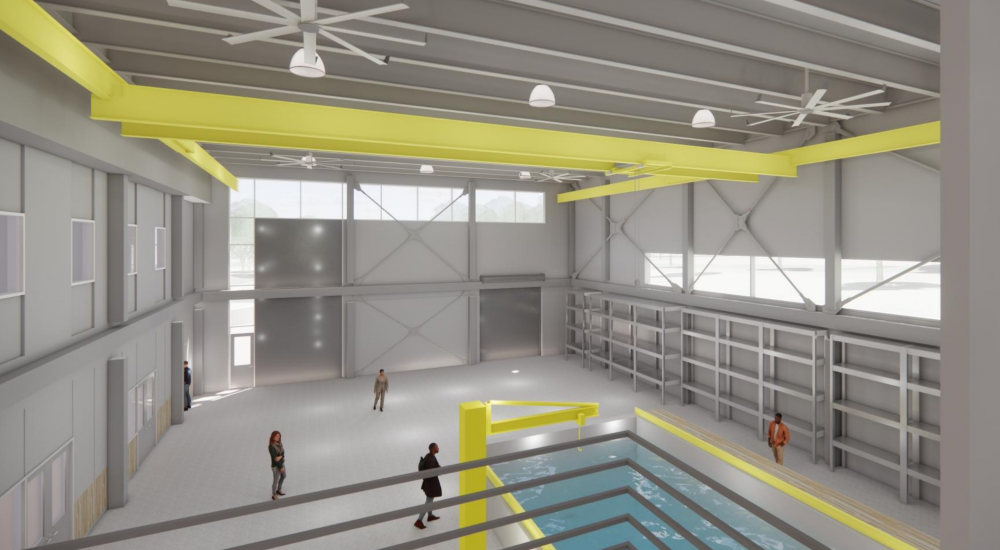 The staging area is a two-story, high-bay space of approximately 5,000 square feet. In this open assembly area, a device is tested and prepared for transportation from its lab to the research vessel. Unique features of the staging area include:
The staging area is a two-story, high-bay space of approximately 5,000 square feet. In this open assembly area, a device is tested and prepared for transportation from its lab to the research vessel. Unique features of the staging area include:
• A 30′ long by 20′ wide and 15′ deep freshwater test tank,
• A 10-ton bridge crane able to access the entire area for moving large submersibles and their portable shipboard control rooms,
• A smaller davit crane to manipulate vehicles inside the test tank,
• Two oversize doors through which large transport vehicles can access the space,
• Radiant floor heating around the test tank to maintain a dry, slip-free work area, and
• Marine-grade, high-voltage connections matching equipment used on research vessels.
Test Tank
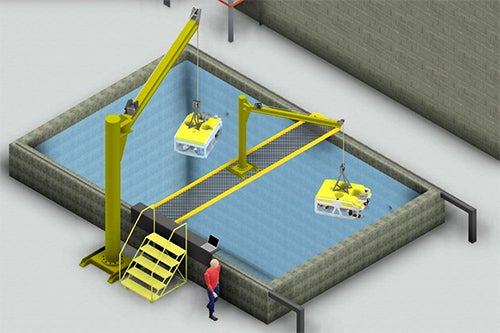 The staging area houses the 20-foot wide by 30-foot long test tank that has a uniform depth of 15 feet. In addition to being supported by the staging area’s bridge crane, the tank also has a dedicated davit crane and movable working platform suspended on rails that spans the entire width of the tank. The adjacent pump room filters this freshwater tank to ensure clear visibility at full depth. The tank walls have a full array of data and power connections to support the research vehicle and test equipment without cables on the floor or overhead.
The staging area houses the 20-foot wide by 30-foot long test tank that has a uniform depth of 15 feet. In addition to being supported by the staging area’s bridge crane, the tank also has a dedicated davit crane and movable working platform suspended on rails that spans the entire width of the tank. The adjacent pump room filters this freshwater tank to ensure clear visibility at full depth. The tank walls have a full array of data and power connections to support the research vehicle and test equipment without cables on the floor or overhead.
Primary Labs
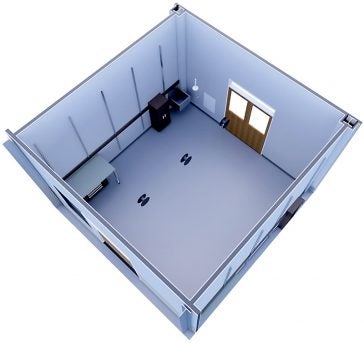 The eight primary faculty-research labs are all located on the first floor with direct access to either the staging area or patio, which is convenient for use of the test tank or testing satellite communications outdoors. Each lab is approximately 400-square-feet and includes specialized utilities, including overhead power drops and dedicated outlets for high-voltage equipment. Except for a fixed sink and safety equipment (such as eye-wash stations) attached to the walls, the labs provide flexibility. They are outfitted with rolling benches that a researcher can reposition and reconfigure as projects change.
The eight primary faculty-research labs are all located on the first floor with direct access to either the staging area or patio, which is convenient for use of the test tank or testing satellite communications outdoors. Each lab is approximately 400-square-feet and includes specialized utilities, including overhead power drops and dedicated outlets for high-voltage equipment. Except for a fixed sink and safety equipment (such as eye-wash stations) attached to the walls, the labs provide flexibility. They are outfitted with rolling benches that a researcher can reposition and reconfigure as projects change.
Secondary Labs
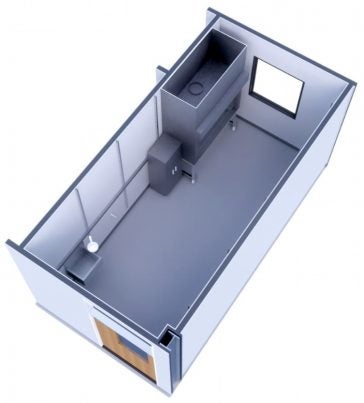 Each of these eight, 200-square-foot, discrete work spaces are available for shared or individual use as projects expand or contract. Secondary labs also provide space for specialized procedures, such as those requiring a fume hood, to be conducted without disrupting operations in a primary lab.
Each of these eight, 200-square-foot, discrete work spaces are available for shared or individual use as projects expand or contract. Secondary labs also provide space for specialized procedures, such as those requiring a fume hood, to be conducted without disrupting operations in a primary lab.
Shops
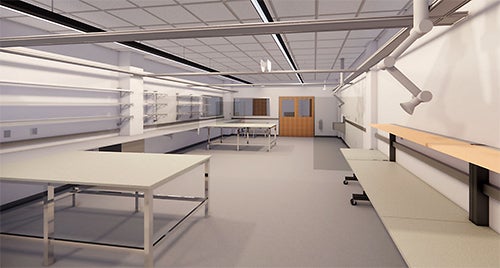 Two 800-square-foot shops adjacent to the staging area and test tank will provide manufacturing capabilities. Equipment in the mechanical shop, such as milling machines, band saws, sanders, and a lathe will enable tight-tolerance fabrication in traditional and specialized materials. The adjacent clean shop will be outfitted for rapid development of prototypes using 3-D printing technologies and applications of electronics.
Two 800-square-foot shops adjacent to the staging area and test tank will provide manufacturing capabilities. Equipment in the mechanical shop, such as milling machines, band saws, sanders, and a lathe will enable tight-tolerance fabrication in traditional and specialized materials. The adjacent clean shop will be outfitted for rapid development of prototypes using 3-D printing technologies and applications of electronics.
Offices
Single-occupancy offices will accommodate nine faculty members—four from the Graduate School of Oceanography, four from the Department of Ocean Engineering and one visiting principal investigator. The building program provides offices for technical and administrative support staff as well as workspace for 20 graduate students, team collaboration space and a break room.
Incubator Suite
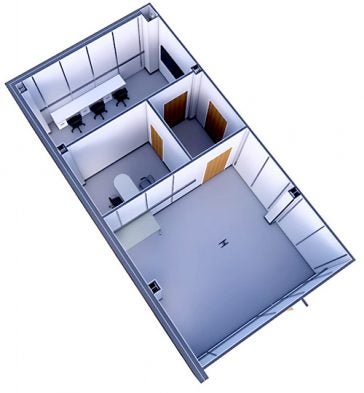 Located on the second floor, the suite will be purpose-built for collaboration, research and development with blue economy partners from industry or government. The space is similar to the standard faculty primary and secondary labs, but is enhanced with added security measures to protect intellectual property. Users of the incubator suite will have full access to the shops, staging area and test tank as they partner with URI faculty to develop new in-water technologies.
Located on the second floor, the suite will be purpose-built for collaboration, research and development with blue economy partners from industry or government. The space is similar to the standard faculty primary and secondary labs, but is enhanced with added security measures to protect intellectual property. Users of the incubator suite will have full access to the shops, staging area and test tank as they partner with URI faculty to develop new in-water technologies.
